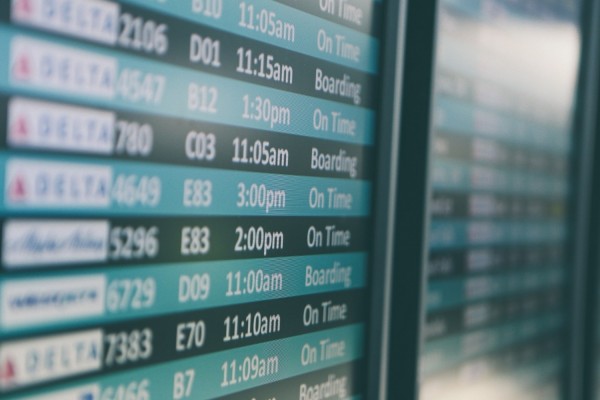CDC's Airport COVID-19 Symptom Screenings, Ineffective
Earlier in the year, the Centers for Disease Control and Prevention (CDC), in collaboration with the Department of Homeland Security (DHS), organized an enhanced entry risk assessment and management program for passengers arriving via planes from certain countries with the sustained transmission of SARS-CoV-2. The virus that causes COVID-19. However, according to the CDC's Morbidity and Mortality Weekly Report, challenges arose in the middle of the screenings.
ALSO READ: 3 Cs to Avoid to Help Reduce the Risk of COVID-19, According to Infectious Disease Expert

According to CDC's report, screenings on 3 U.S. airports, namely, Los Angeles International Airport, San Francisco International Airport, and John F. Kennedy International Airport, are focused on countries that became the epicenter of COVID 19. These countries need to be screened travelers from Mainland China, Iran, 26 countries in the European Schengen Area, United Kingdom, Ireland, and Brazil.
In CDC's report, findings demonstrate that temperature and symptom screenings at the airports detected few COVID-19 cases and required considerable resources. Officials were able to screen 766,000 passengers. Only 35 passengers were tested for COVID-19 and only tested as positive for the disease. The report also said that manual data collection of travelers' contact information upon arrival is also resource-intensive. However, they added that it poses a risk to travelers who might have to idle in crowded, enclosed spaces while the information is being gathered.
Another limitation of the screening, according to CDC, is that SARS-CoV-2 asymptomatic and presymptomatic or contagious infections before the onset of the disease on the individual can result in substantial transmission was unknown early in the pandemic.
READ ALSO: One Asymptomatic Carrier Rides an Elevator Alone, 70 Others Get COVID-19 After
Conclusion
CDC emphasized 3 limitations on their report; first, not all symptomatic travelers were referred for public health assessments because most of the COVID-19 symptoms are non-specific. The data available are not enough in finding out the proportion of who might have the symptoms. Second, CDC mentioned in their report that most travelers referred for public health assessment were not sent to a local healthcare facility or was or undergone a test for SARS-CoV-2, which can be both sources of a selection of bias on the underestimation of the number of cases in the screened travelers. Third, they also mentioned that the passengers' screening from other countries is limited, and the surveillance system present has not enough information or data to match the COVID-19 cases reported by states to the identified international travelers.
CDC notes that the report cannot provide or give a conclusive valuation of the outcomes of screened travelers who were not sent for medical evaluation or comparing outcomes from screened travelers who are from countries not targeted for the screening itself.
Steps in Screening
According to the CDC's report, the screening in the airports is made up of 3 steps. First, United States Customs and Border Protection Officers will identify and send the travelers for screening if they are from one of the specified countries intended for screening in the past 14 days. Then signs of illness, temperature, and questionnaires about signs and symptoms for the last 24 hours occurred. Then the collection of contact information will be administered. Lastly, sending sick travelers and those who have said they are exposed to COVID-19 positive patients are sent for additional public health assessment.
READ NEXT: Study Finds New COVID-19 Symptoms That Young Adults May Experience
Check out more news and information on COVID-19 on MD News Daily.
Nov 19, 2020 07:00 PM EST





